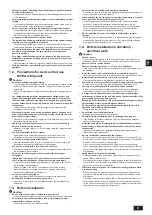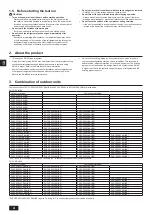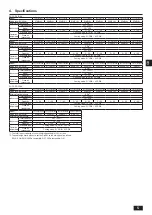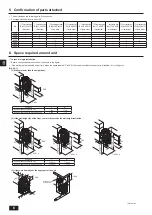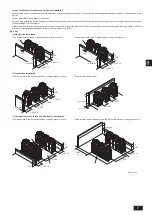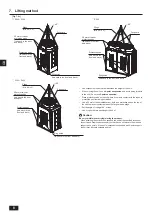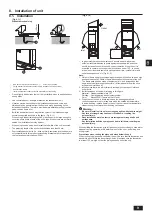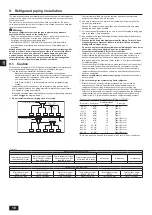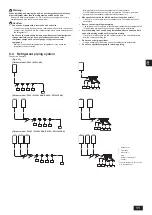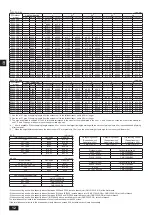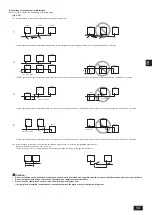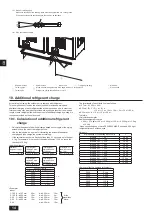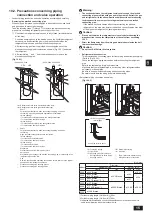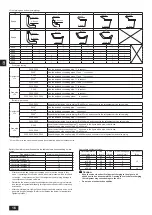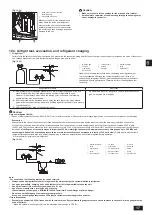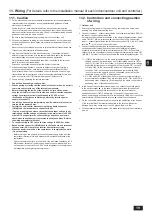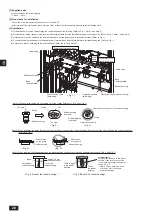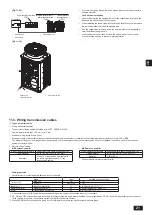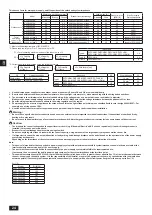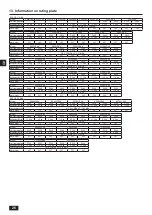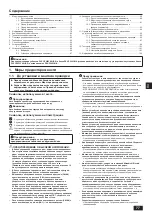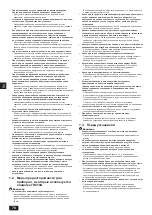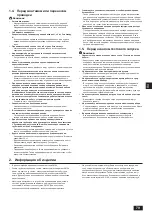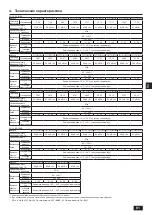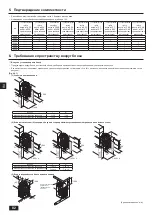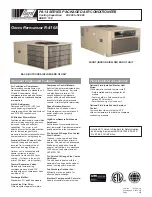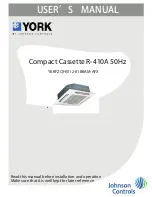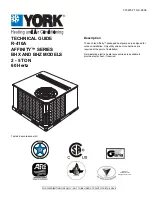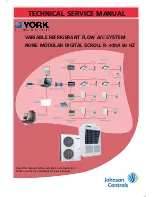
17
GB
10.3. Airtight test, evacuation, and refrigerant charging
1
Airtight test
Perform with the valve of the outdoor unit closed, and pressurize the connection piping and the indoor unit from the service port provided on the valve of the outdoor
unit. (Always pressurize from both the liquid pipe and the gas pipe service ports.)
[Fig. 10.3.1]
LO
HI
A
D
E
C
B
B
H
I
J
G
F
Airtight test procedure
Restriction
(1) After pressurizing to the design pressure (4.15 MPa) using nitrogen gas, allow it to
stand for about one day. If the pressure does not drop, airtightness is good.
However, if the pressure drops, since the leaking point is unknown, the following
bubble test may also be performed.
(2) After the pressurization described above, spray the flare connection parts, brazed
parts, and other parts that may leak with a bubbling agent (Gupoflex, etc.) and visually
check for bubbles.
(3) After the airtight test, wipe off the bubbling agent.
• If a flammable gas or air (oxygen) is used as the pressurization
gas, it may catch fire or explode.
Caution:
Only use refrigerant R410A.
- The use of other refrigerant such as R22 or R407C, which contains chlorine, will deteriorate the refrigerating machine oil or cause the compressor to malfunction.
2
Evacuation
Evacuate with the valve of the outdoor unit closed and evacuate both the connection piping and the indoor unit from the service port provided on the valve
of the outdoor unit using a vacuum pump. (Always evacuate from the service port of both liquid pipe and gas pipe.) After the vacuum reaches 650 Pa [abs]
[0.0943 psi/5 Torr], continue evacuation for at least one hour or more. Then, stop the vacuum pump and leave it for 1 hour. Ensure the degree of vacuum has not
increased.
(If the degree of vacuum increase is larger than 130 Pa, water might have entered. Apply pressure to dry nitrogen gas up to 0.05 MPa and
vacuum again. Repeat the evacuation process three or more times until the vacuum pressure is lost by 130 Pa or below.)
Finally, seal in with the liquid
refrigerant through the liquid pipe, and adjust the gas piping to obtain an appropriate amount of the refrigerant during operation.
* Never perform air purging using refrigerant.
Note:
- For evacuation, the following procedures can be referred.
• Always add an appropriate amount of refrigerant. Also always charge the system with liquid refrigerant.
• Use a gauge manifold, charging hose, and other parts for the refrigerant indicated on the unit.
• Use a graviometer. (One that can measure down to 0.1 kg.)
• Use a vacuum pump with a reverse flow check valve.
(Recommended vacuum gauge: ROBINAIR 14830A Thermistor Vacuum Gauge or Micron Gauge)
Do not use a manifold gauge to measure vacuum pressure.
Also use a vacuum gauge that reaches 65 Pa [abs] or below after operating for five minutes.
<Triple Evacuation>
• Evacuate the system to 4,000 microns from both service valves. System manifold gauges must not be used to measure vacuum. A micron gauge must be
used at all times.
- Break the vacuum with Nitrogen (N2) into the discharge service valve to 0 PSIG.
[Fig. 10.3.2]
LO
HI
A
B
C
N
N
E
D
F
O
G
H
I
K
J
L
M
A
System analyzer
B
Lo knob
C
Hi knob
D
Valve
E
Liquid pipe
F
Gas pipe
G
Service port
H
Three-way joint
I
Valve
J
Valve
K
R410A cylinder
L
Scale
M
Vacuum pump
N
To indoor unit
O
Outdoor unit
A
Nitrogen gas
B
To indoor unit
C
System analyzer
D
Lo knob
E
Hi knob
F
Valve
G
Liquid pipe
H
Gas pipe
I
Outdoor unit
J
Service port
Observe the following restrictions when conducting an air tightness test
to prevent negative effects on the refrigerating machine oil. Also, with
nonazeotropic refrigerant (R410A), gas leakage causes the composition to
change and affects performance. Therefore, perform the airtightness test
cautiously.
[Fig. 10.2.3]
A
B
A
Example of closure materials
(field-supplied)
B
Fill the gap at the site
Make sure to seal-off the space around
areas where the wires and refrigerant
pipes enter the unit to ensure that small
animals, rainwater, or snow cannot enter
the unit through such openings and cause
damage to the unit.
Caution:
• Make sure to seal-off the openings for the pipe and wire retrieval.
• Small animals, rainwater, or snow entering through the openings may
cause damage to the device.

